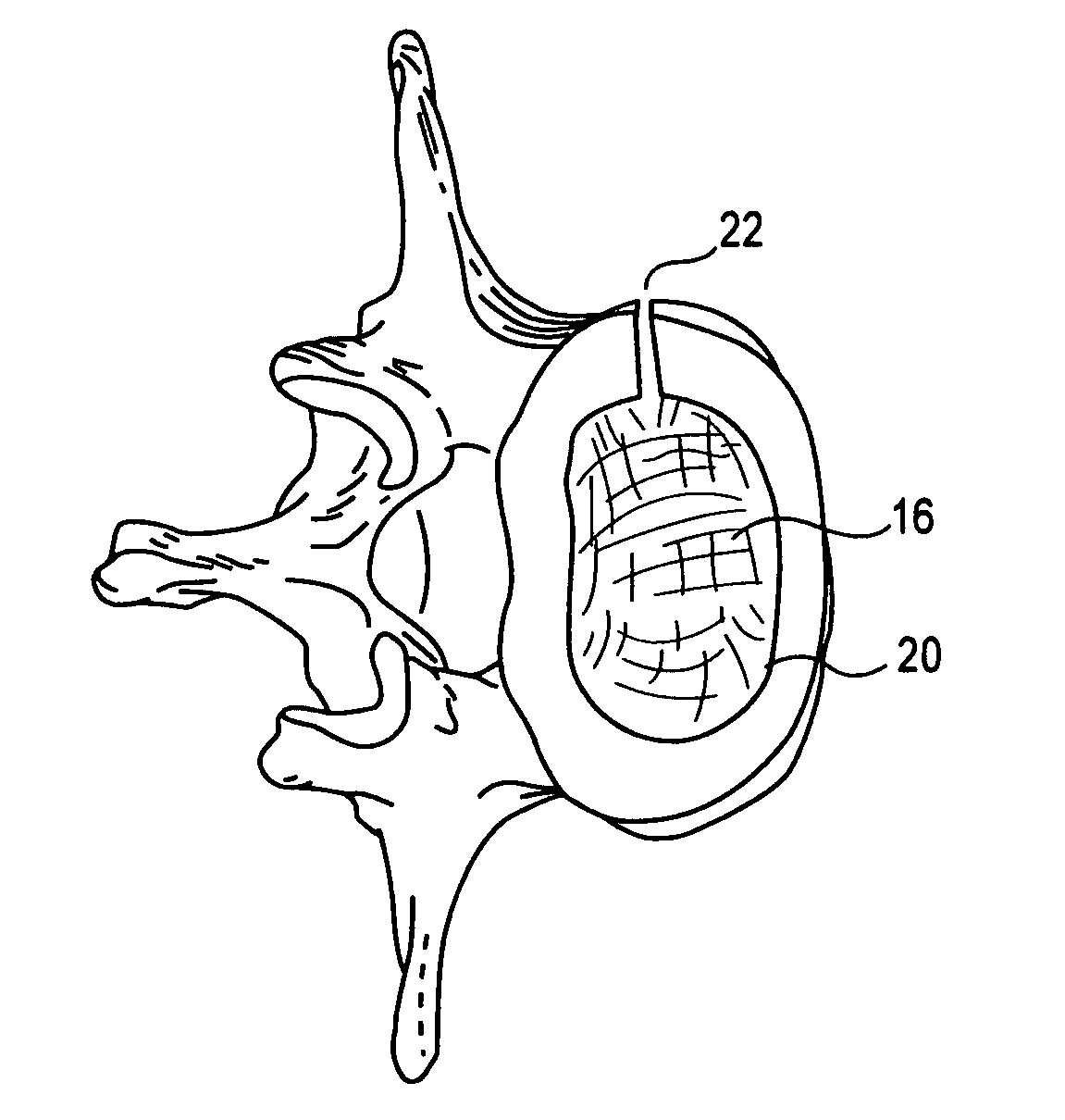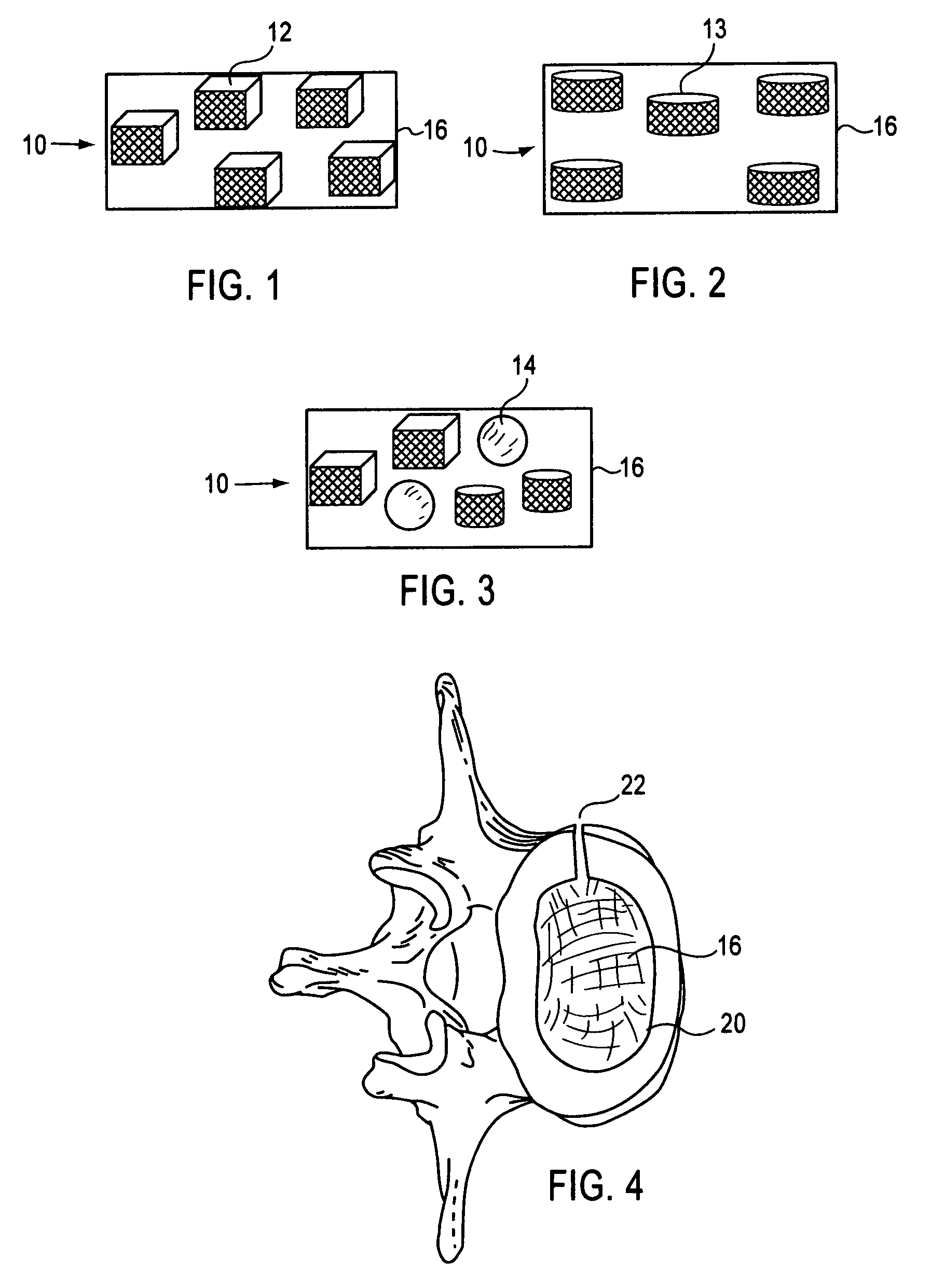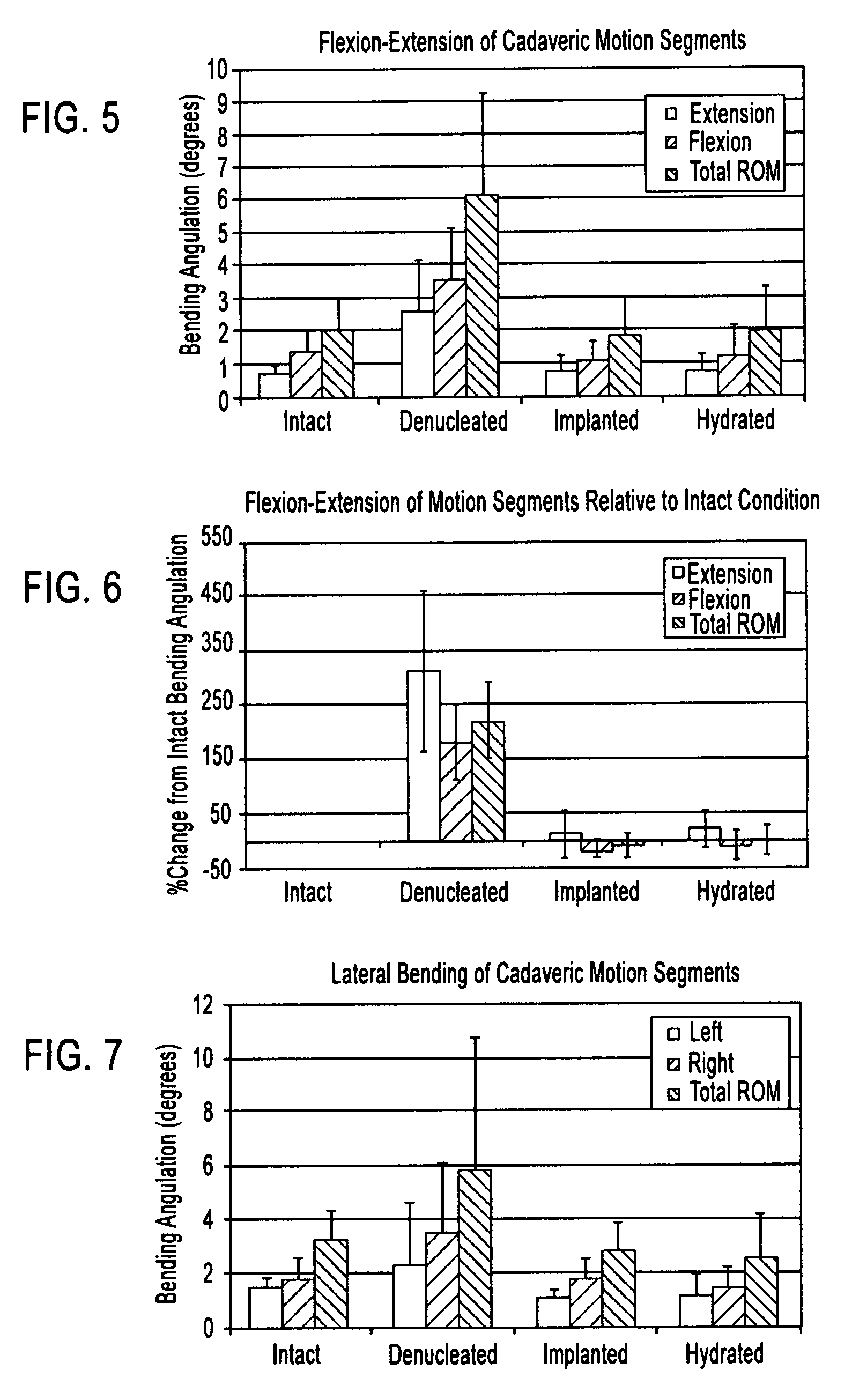Packed demineralized cancellous tissue forms for disc nucleus augmentation, restoration, or replacement and methods of implantation
a cancellous tissue and disc nucleus technology, applied in the field of tissue forms, can solve the problems of significant problems such as implant migration and implant hardening, and the inability to use nucleus pulposus replacement devices or augmentation technologies available for clinical use in the united states, and achieve the effect of substantial annulotomy and total nucleotomy
- Summary
- Abstract
- Description
- Claims
- Application Information
AI Technical Summary
Benefits of technology
Problems solved by technology
Method used
Image
Examples
Embodiment Construction
The preferred embodiment and best mode of the invention is seen in FIGS. 1 to 4. The present invention is directed toward an implant that is formed of a plurality of small, substantially demineralized cancellous bone shapes 10 that can be loaded and packed into a cannula or hollow rod and then inserted by packing the small shaped bone units into a disc nucleus in a non-dehydrated state. This packed material is to be utilized to augment, restore, or replace a disc nucleus. In a preferred embodiment, the tissue forms described within are to be delivered into an expandable porous mesh pouch 16 that has been pre-placed in the disc nucleus 20 through a small lateral opening 22 in the disc annulus such that the allograft material will be contained and not extrude out of the nucleus through an annular defect. The deformable nature of wet, demineralized cancellous bone will allow the tissue forms to pack tightly together in a confined space during delivery under sufficient pressure. A suita...
PUM
| Property | Measurement | Unit |
|---|---|---|
| length | aaaaa | aaaaa |
| mean particle size | aaaaa | aaaaa |
| sizes | aaaaa | aaaaa |
Abstract
Description
Claims
Application Information
 Login to View More
Login to View More - R&D
- Intellectual Property
- Life Sciences
- Materials
- Tech Scout
- Unparalleled Data Quality
- Higher Quality Content
- 60% Fewer Hallucinations
Browse by: Latest US Patents, China's latest patents, Technical Efficacy Thesaurus, Application Domain, Technology Topic, Popular Technical Reports.
© 2025 PatSnap. All rights reserved.Legal|Privacy policy|Modern Slavery Act Transparency Statement|Sitemap|About US| Contact US: help@patsnap.com



